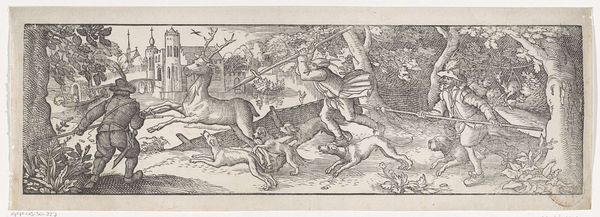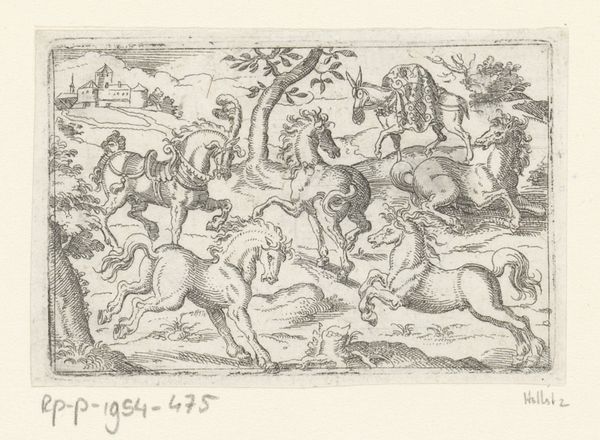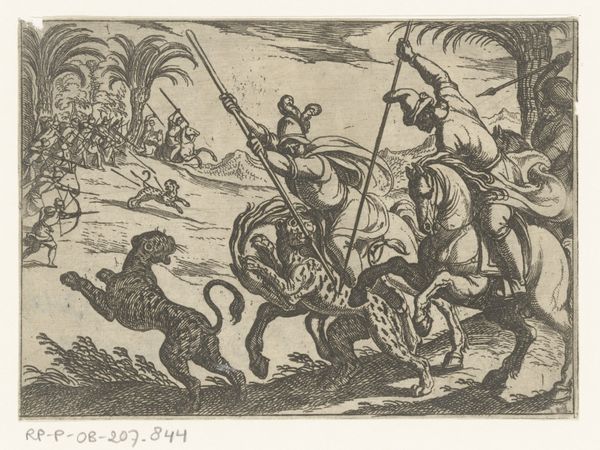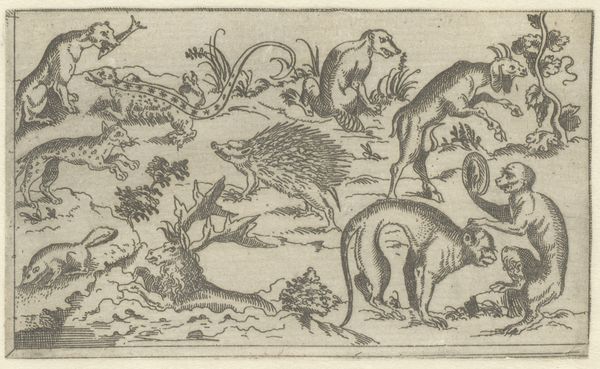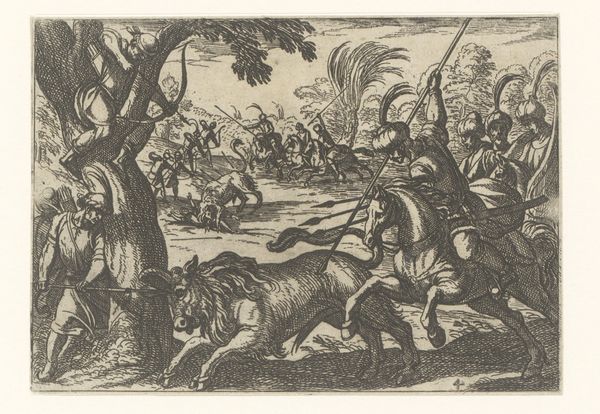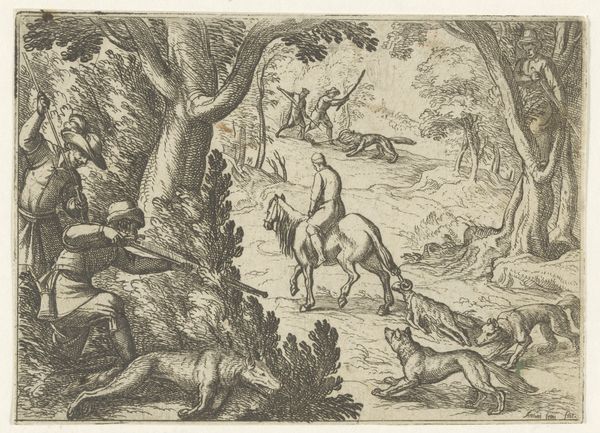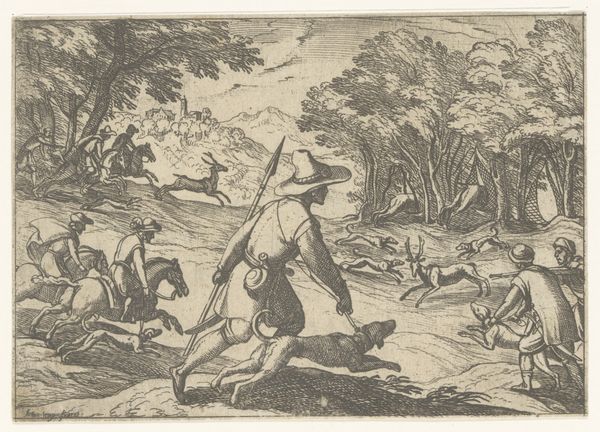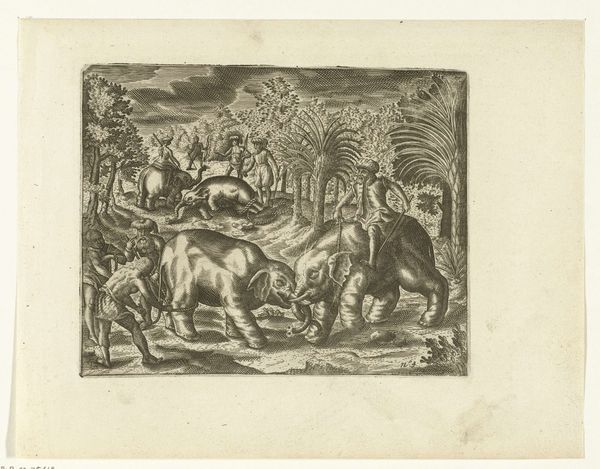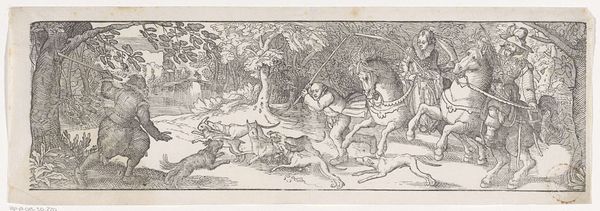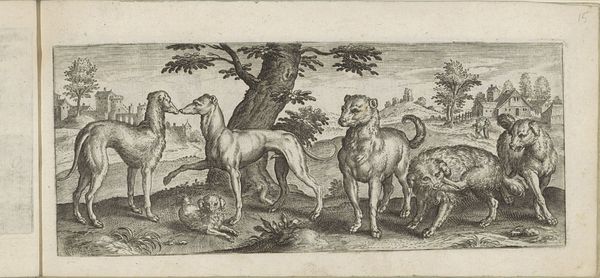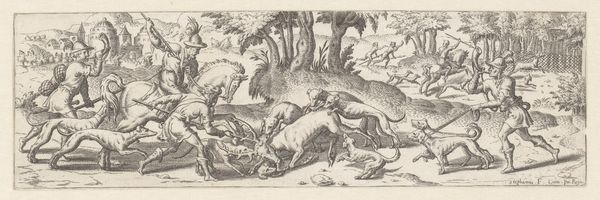
print, engraving
# print
#
old engraving style
#
landscape
#
mannerism
#
genre-painting
#
engraving
Dimensions: width 187 mm, height 33 mm
Copyright: Rijks Museum: Open Domain
Curator: Here we have "Valkenjacht," an engraving created in 1565 by Abraham de Bruyn. Editor: Immediately striking is its rhythmic quality – the eye jumps between horse and rider groupings across the horizontal field. There’s a kind of stylized energy even in this monochrome print. Curator: It perfectly embodies Mannerism with that somewhat artificial elegance. Falconry, or Valkenjacht, as its known in Dutch, was an activity steeped in symbolism for the aristocracy, wasn't it? A display of power and status but also a mastery over nature. Editor: The repetition underscores that display, wouldn't you agree? The linear composition really amplifies the scene's decorative appeal. The engraving style enhances the stark contrast, flattening the image in a way that focuses on outline and form rather than depth or naturalism. Curator: Absolutely, this wasn’t just about the hunt itself, but projecting authority and privilege. Notice how the artist depicts not just the hunters and their falcons but also alludes to the retinue, a packed animal for game... Even the placement of each character becomes emblematic, symbolic of order and command. Editor: Yes, I also wonder about the specific visual language. The figures have a kind of forced grace, especially evident in the horses, so elegantly stylized and, if you look carefully, anatomically suspect. Curator: It suggests an idealized vision of the world, a realm shaped by courtly culture and humanist ideals. Think how it reinforced the social order—a controlled dance of hierarchy with roles played out according to script. Editor: Looking closer, the composition is actually more intricate than I first gave it credit for, and considering its an engraving print—that level of detail is very striking. But to come back to that flattened depth—it feels like more of a statement to reinforce symbolism rather than attempting realistic portraiture, which you pointed to perfectly earlier. Curator: The image reverberates then, even now, of rituals that uphold power and order. Editor: An enduring image, and a fascinating study of composition and contrast from that era, offering a valuable lens on societal values that still echo, in abstract form, today.
Comments
No comments
Be the first to comment and join the conversation on the ultimate creative platform.
